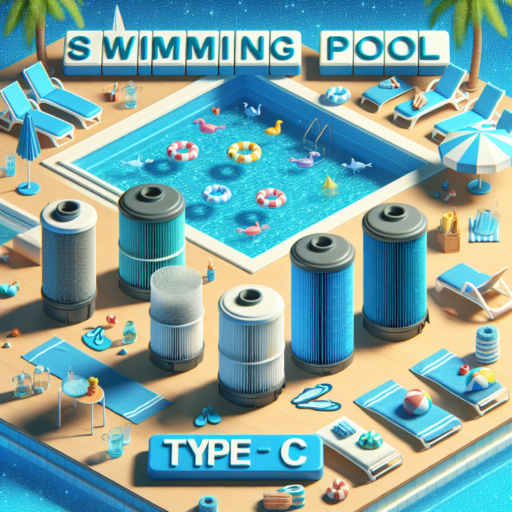What is a high rate sand filter?
A high rate sand filter is a critical component in the realm of water treatment and filtration systems. Designed to purify water at a significantly faster pace than traditional sand filters, these innovative systems harness the natural filtration properties of sand, but operate under higher pressure, leading to an accelerated purification process. The concept behind these filters rests on passing water through a bed of sand at speeds that ensure the removal of impurities and particulates, thereby resulting in cleaner water output.
The utility of a high rate sand filter extends across various applications, including swimming pool filtration, wastewater treatment, and even in the industrial sector where large volumes of water require rapid and efficient purification. The design of these filters is such that they can handle greater rates of water flow without sacrificing the quality of filtration, making them an optimal choice for settings that demand high efficiency and reliability.
Central to the operation of a high rate sand filter is the method of backwashing. This process involves reversing the flow of water to clean the sand bed of accumulated debris, thereby maintaining the filter’s effectiveness and elongating its lifespan. The capacity to regularly and automatically perform backwashing cycles is what distinguishes high rate sand filters from their predecessors, enabling them to continue operating at peak efficiency with minimal manual intervention.
What setting should I run my pool sand filter on?
Choosing the correct setting for your pool sand filter is crucial for maintaining clear, healthy water and ensuring the longevity of the pool’s filtration system. The settings on a pool sand filter typically include «Filter,» «Backwash,» «Rinse,» «Recirculate,» «Waste,» and sometimes «Closed.» Understanding when and why to use these settings can significantly impact the effectiveness of your pool maintenance routine.
For regular operation and the most common scenario, your pool sand filter should be set to the «Filter» mode. This mode directs the water through the sand filter itself, where debris and particles are caught, and the clean water is then returned to the pool. It’s the go-to setting for everyday pool filtration and is recommended to be used whenever the pool is in active use.
However, there are situations that call for other settings. For instance, when performing maintenance tasks such as cleaning out the filter or after a heavy pool use, the «Backwash» setting becomes essential. This setting reverses the flow of water, flushing out trapped debris from the filter back into the waste line. Following a backwash cycle, the «Rinse» setting should be used to stabilize the sand bed and ensure any remaining dirt is not introduced back into the pool.
No se han encontrado productos.
When should you backwash a high rate sand filter of a residential pool?
Understanding the optimal timing for backwashing a high rate sand filter in a residential pool is crucial for maintaining water clarity and hygiene. Typically, the need arises when the water flow becomes significantly hindered due to the accumulation of debris and particulates within the filter. One primary indicator is the pressure gauge reading on your filter.
Increased Pressure Gauge Reading: A clear sign that backwashing is required is when the pressure gauge reads 8-10 psi (pounds per square inch) higher than the baseline or clean reading. This elevated pressure signifies that the filter media is clogged and the water can no longer pass through efficiently, thus necessitating a backwash to restore optimal function.
In addition, visual cues from your pool can also alert you to the need for backwashing. If you notice a decrease in water clarity or the presence of algae, despite regular chemical treatments, it might be time to backwash. Furthermore, following a heavy storm or an increase in pool use, it is advisable to check the filter’s pressure gauge and consider backwashing if the readings have spiked. Regular maintenance, including periodic backwashing, ensures the longevity and effectiveness of your sand filter system.
Can you put too much sand in a sand filter?
Indeed, the question of whether too much sand can be added to a sand filter is one that deserves significant attention. Understanding the mechanics of a sand filter is crucial to grasping why the quantity of sand matters. Essentially, sand filters operate by allowing water to percolate through the sand which traps debris and particles, thereby cleaning the water. However, the effectiveness of this process can be heavily influenced by the amount of sand within the filter.
Adding too much sand to your filter can lead to a myriad of issues. For starters, it can increase the pressure inside the filter, potentially causing damage to the filter systems or leading to inefficient filtering performance. The water, instead of being properly cleaned, may pass through too quickly without adequate filtration or, conversely, may struggle to filter through the densely packed sand. This can significantly hinder the filtration process, leading to cloudy or unclean water being recirculated into the pool or system.
Furthermore, the maintenance of your sand filter can become more burdensome if it is overloaded with sand. The backwash process, necessary for cleaning out the trapped debris from the sand, can become less effective. This inefficiency may result in a need for more frequent maintenance or even premature sand replacement, which could have been avoided with a proper sand level.



